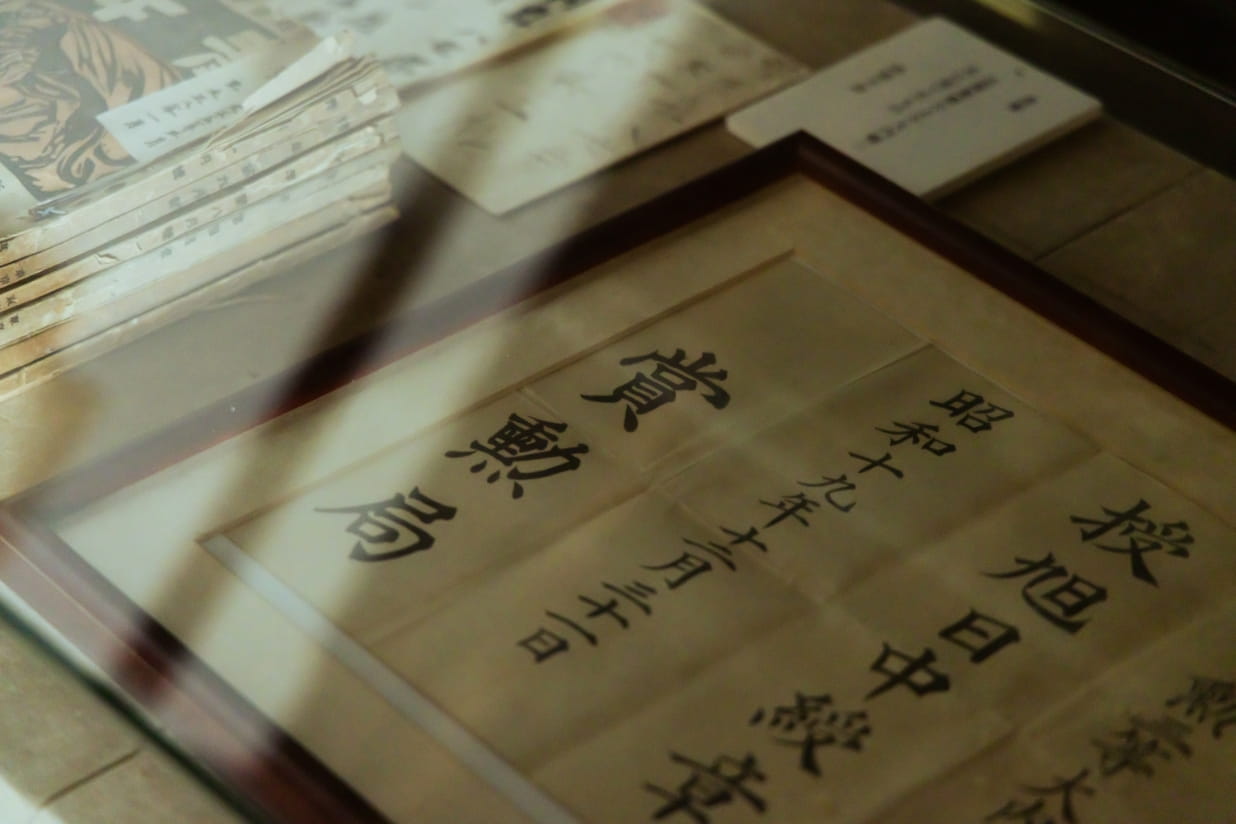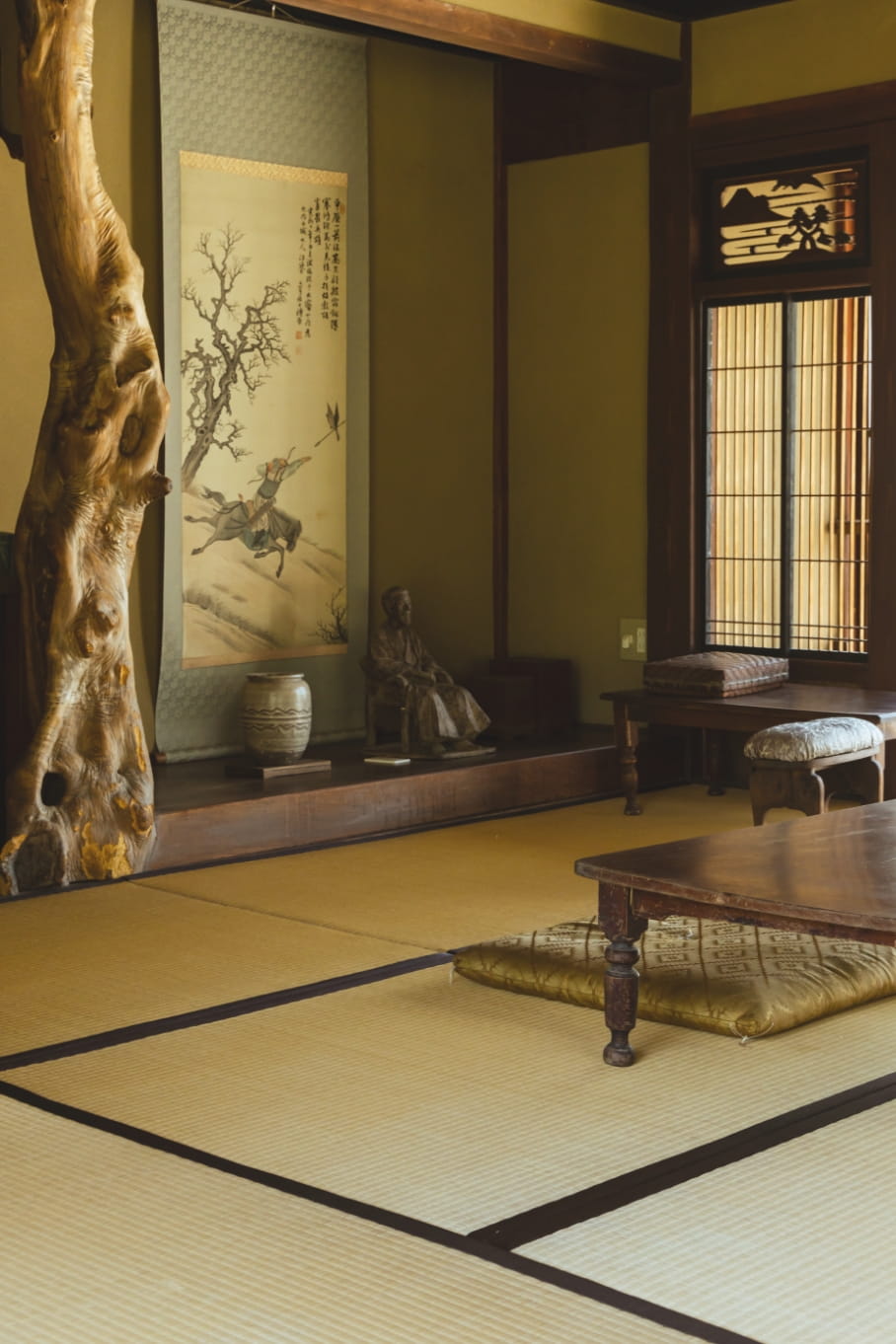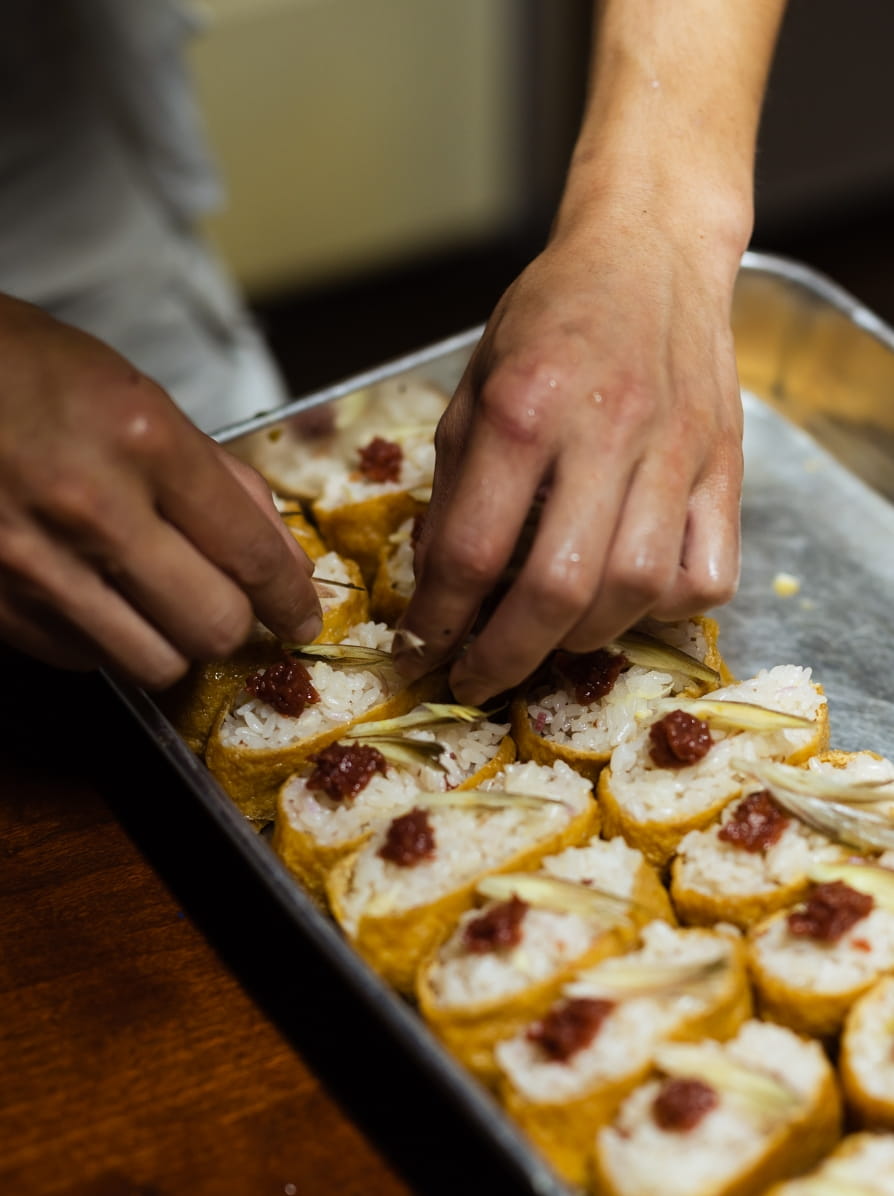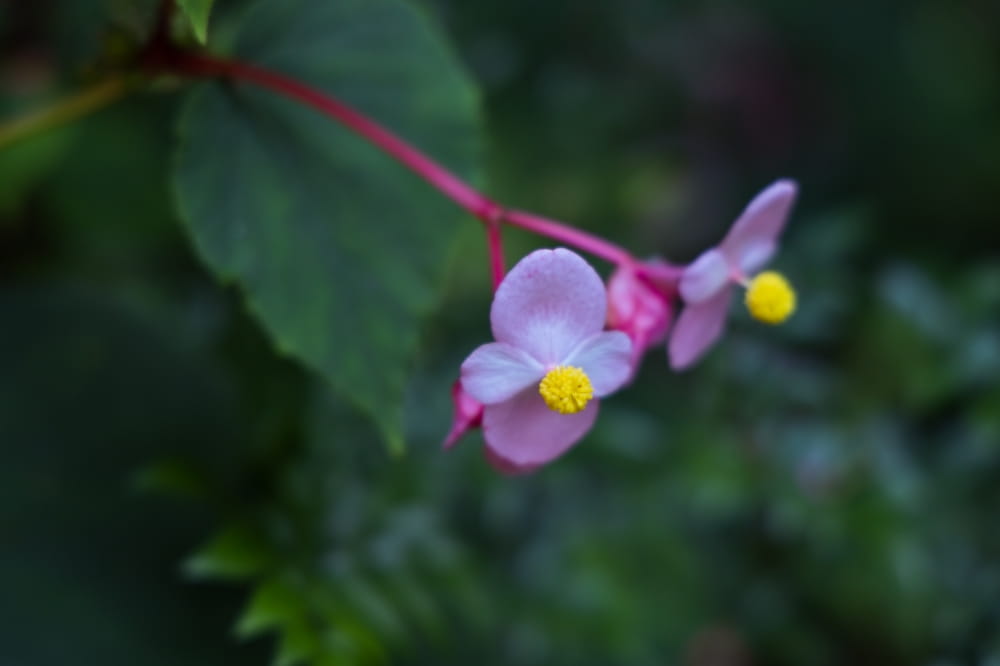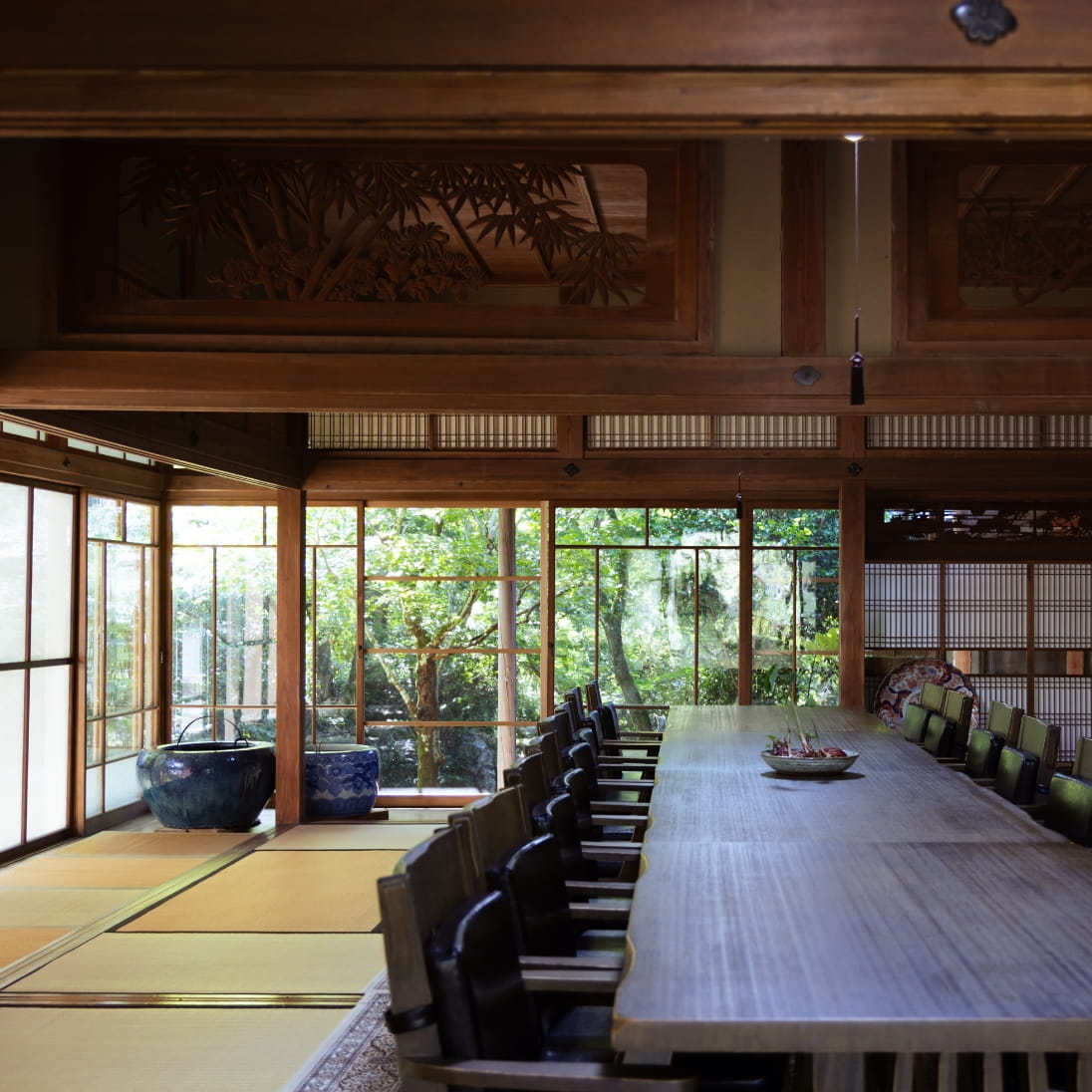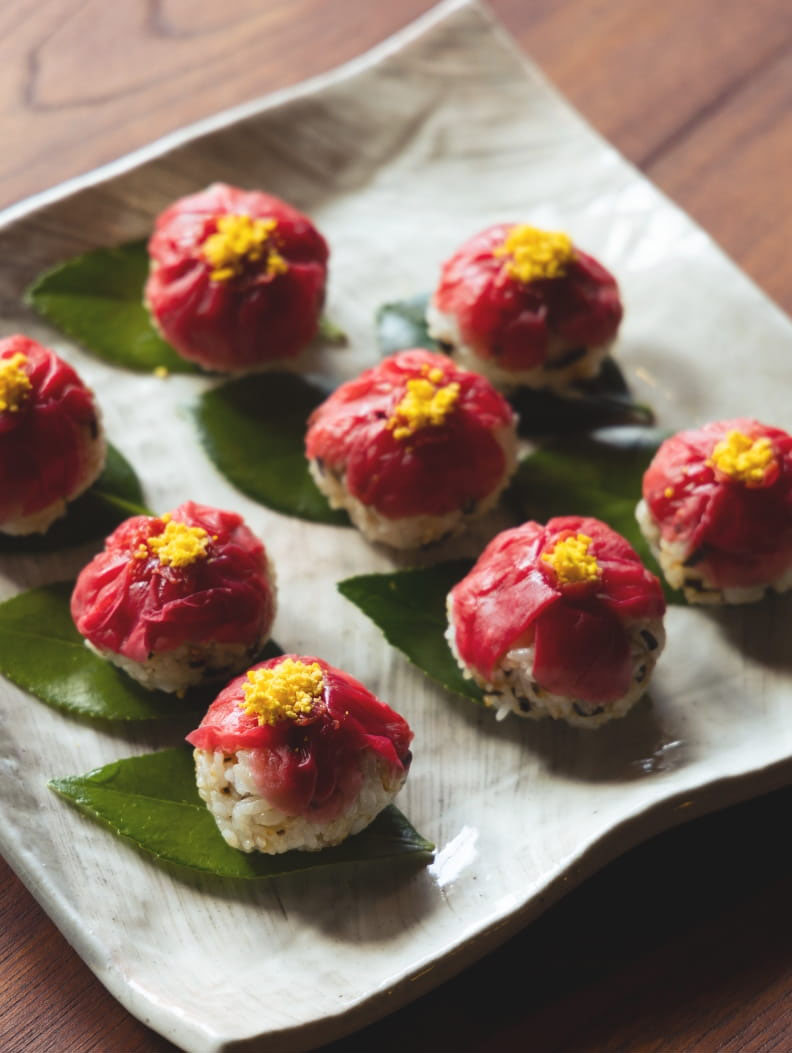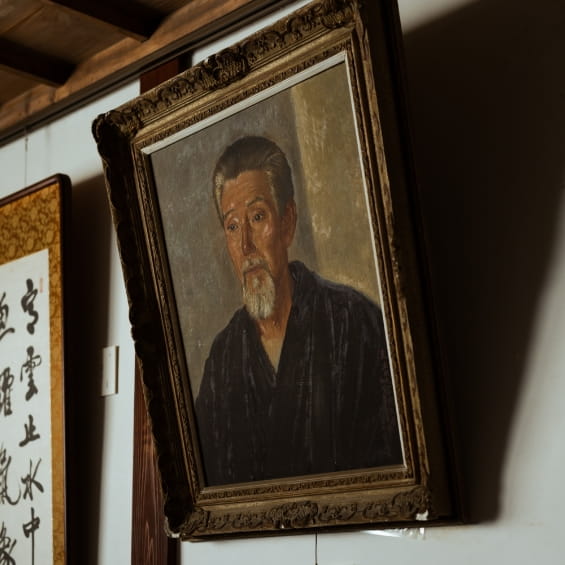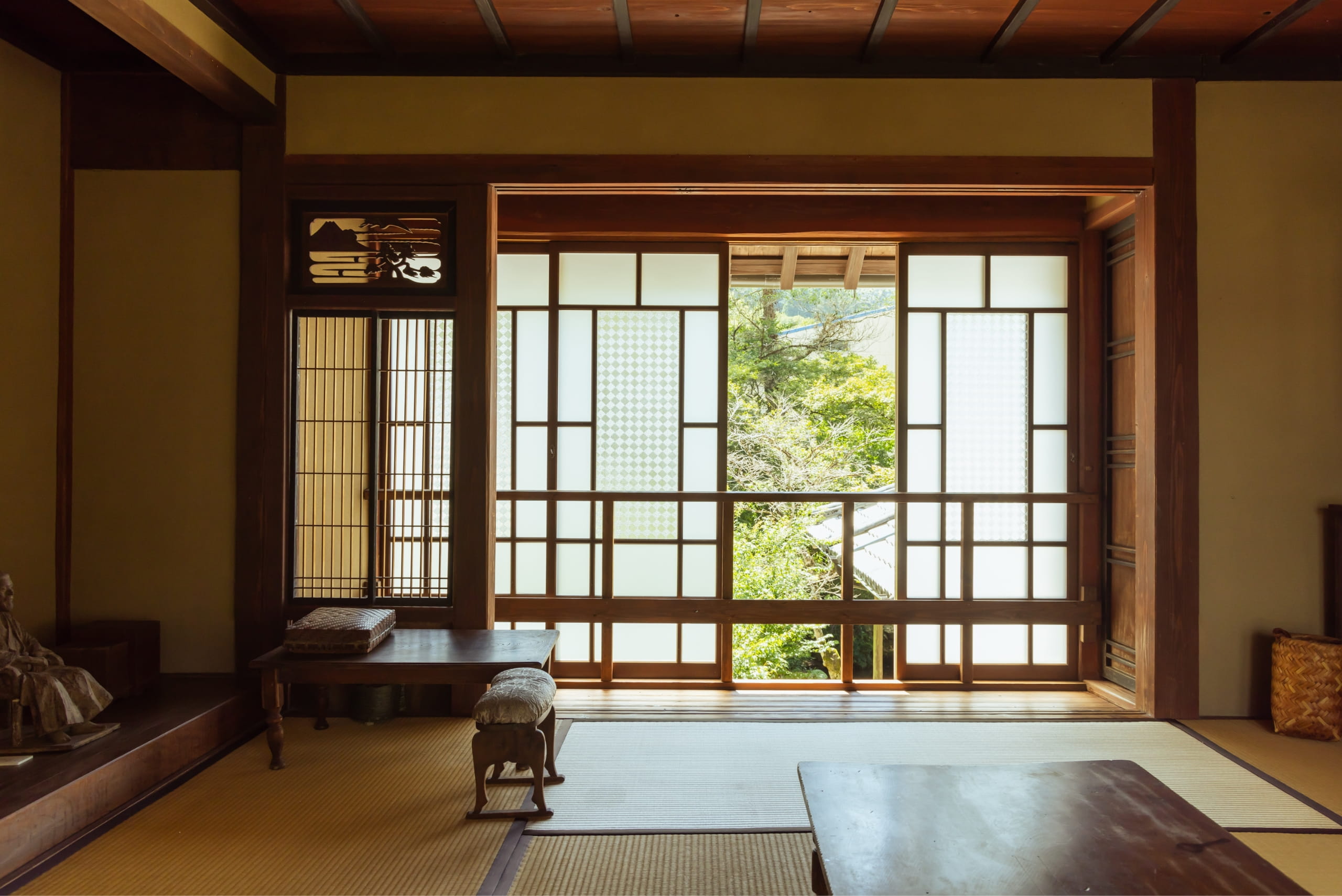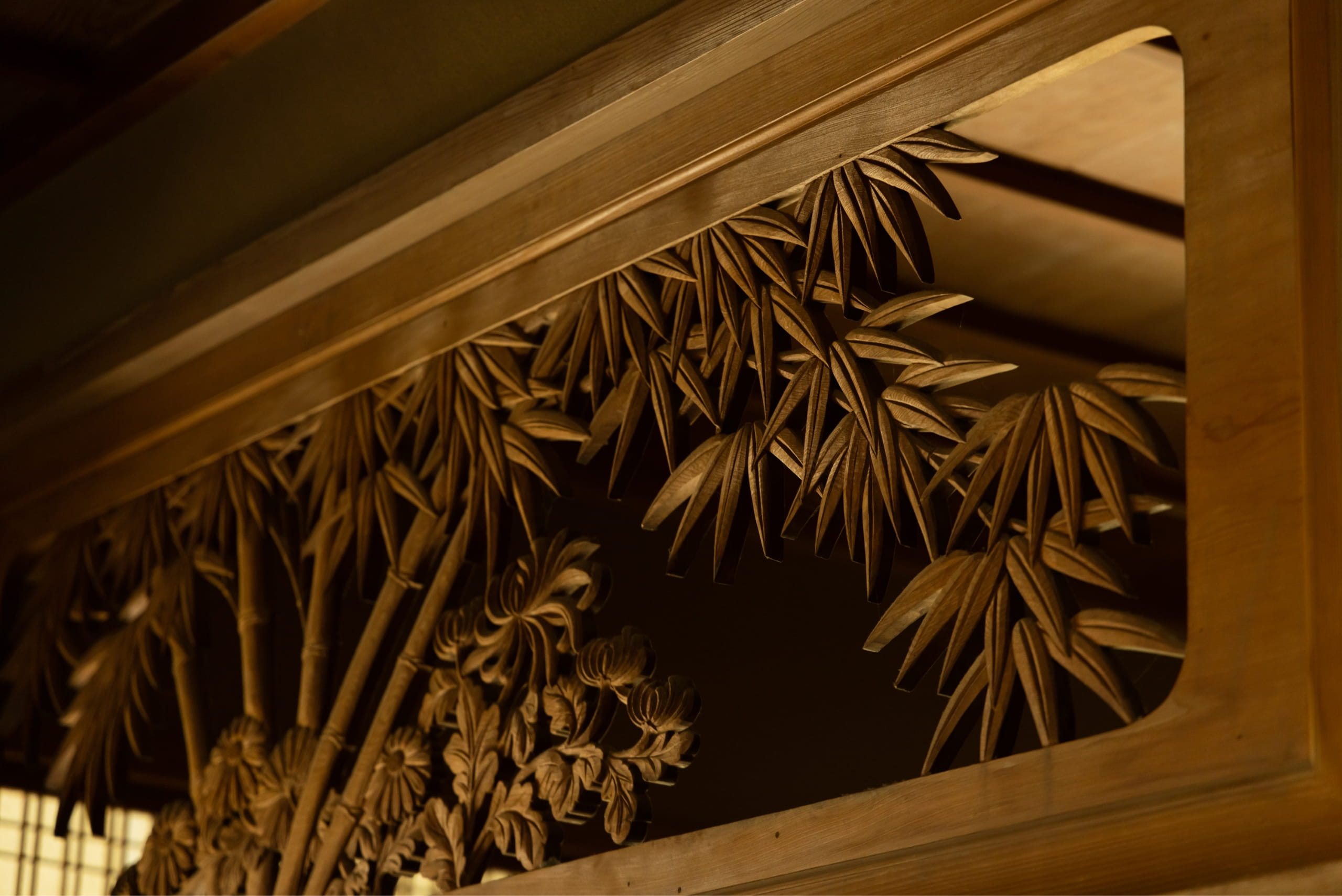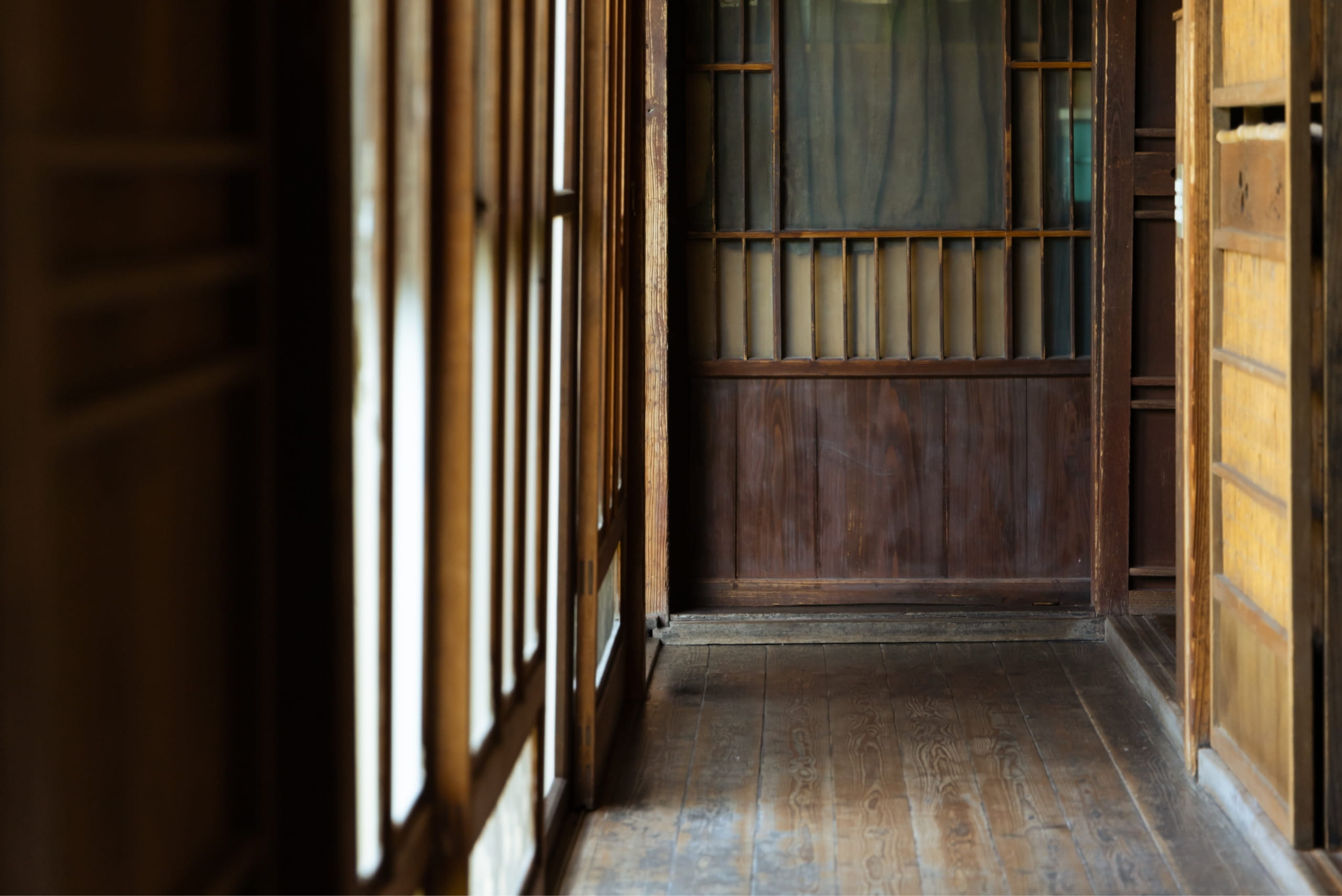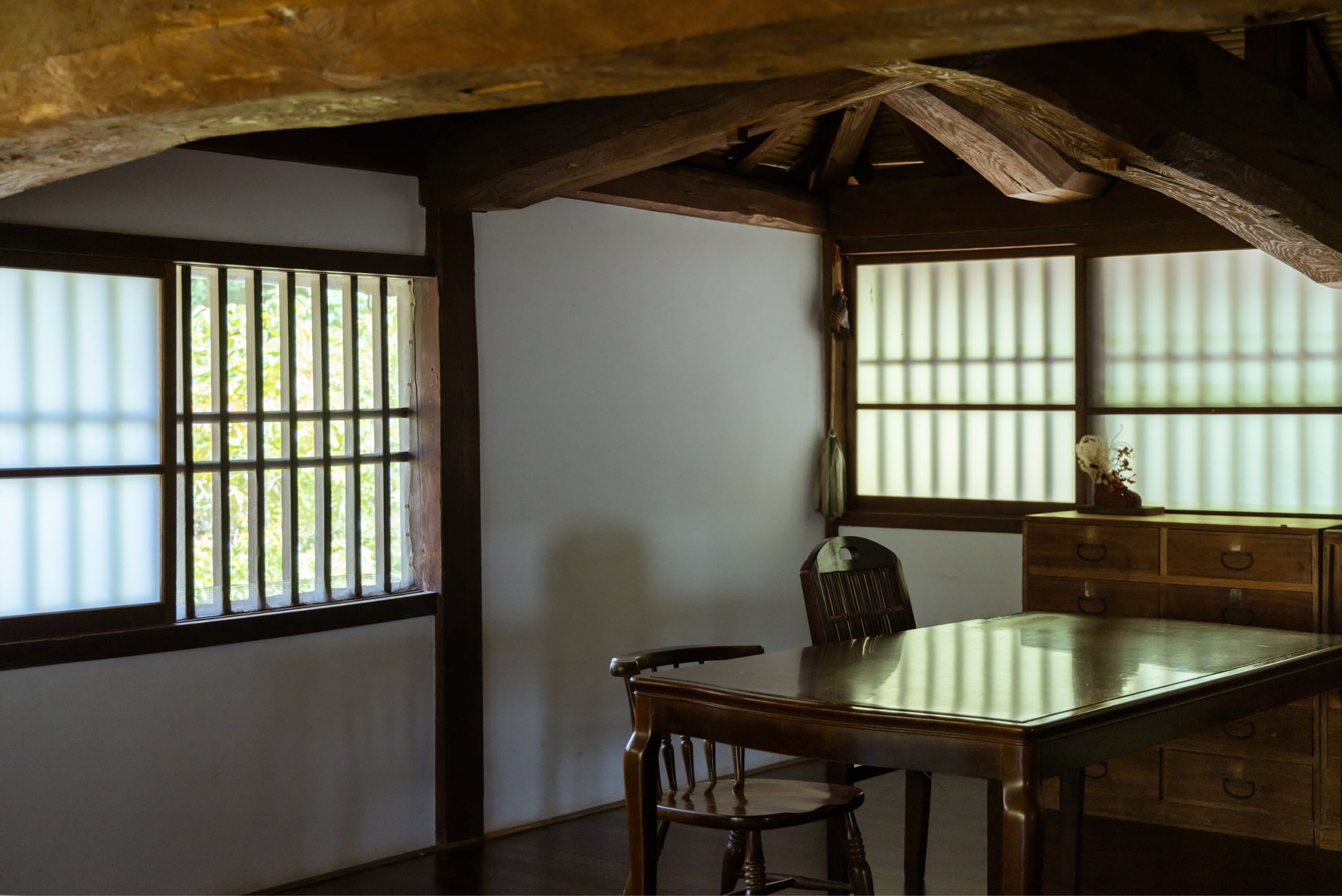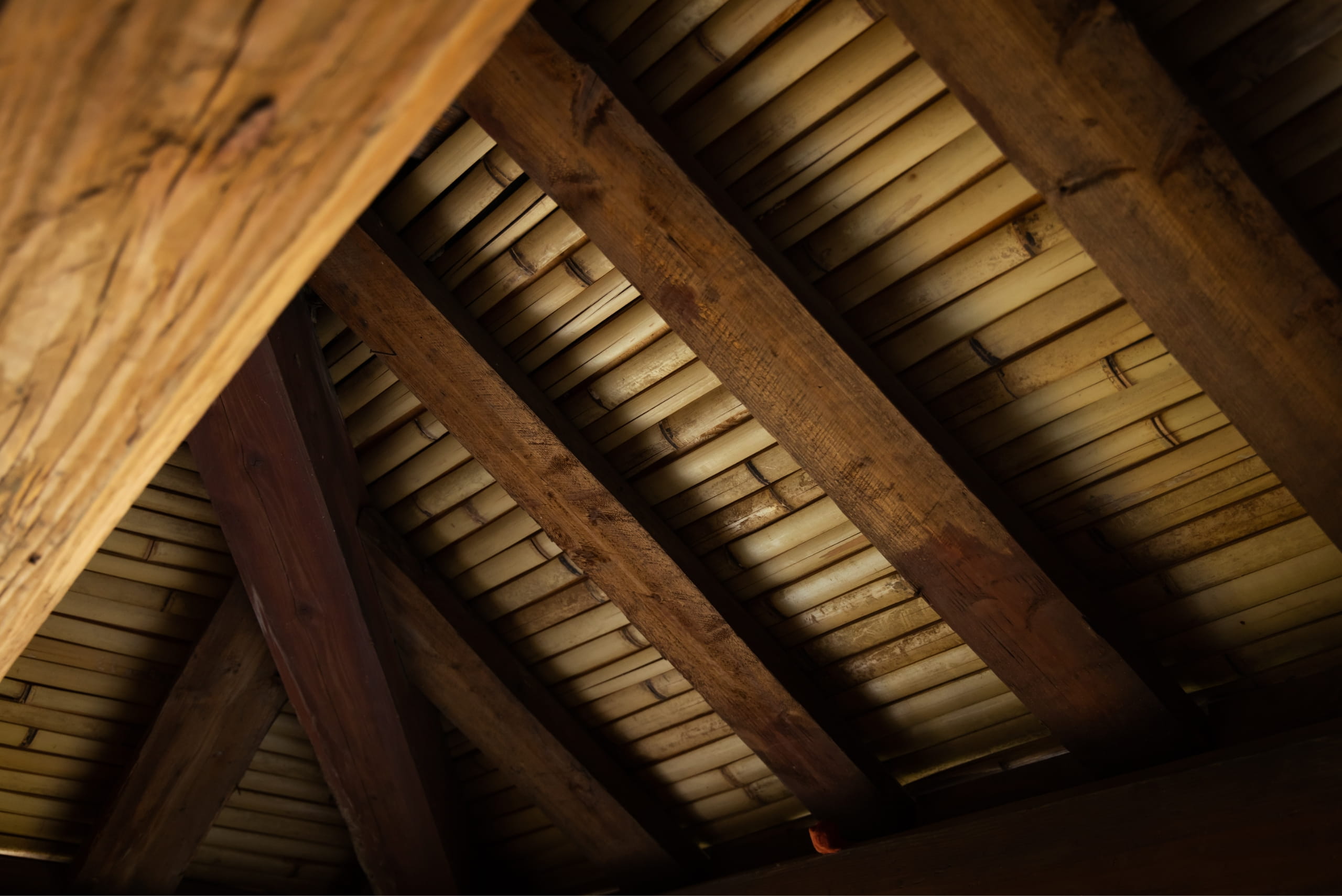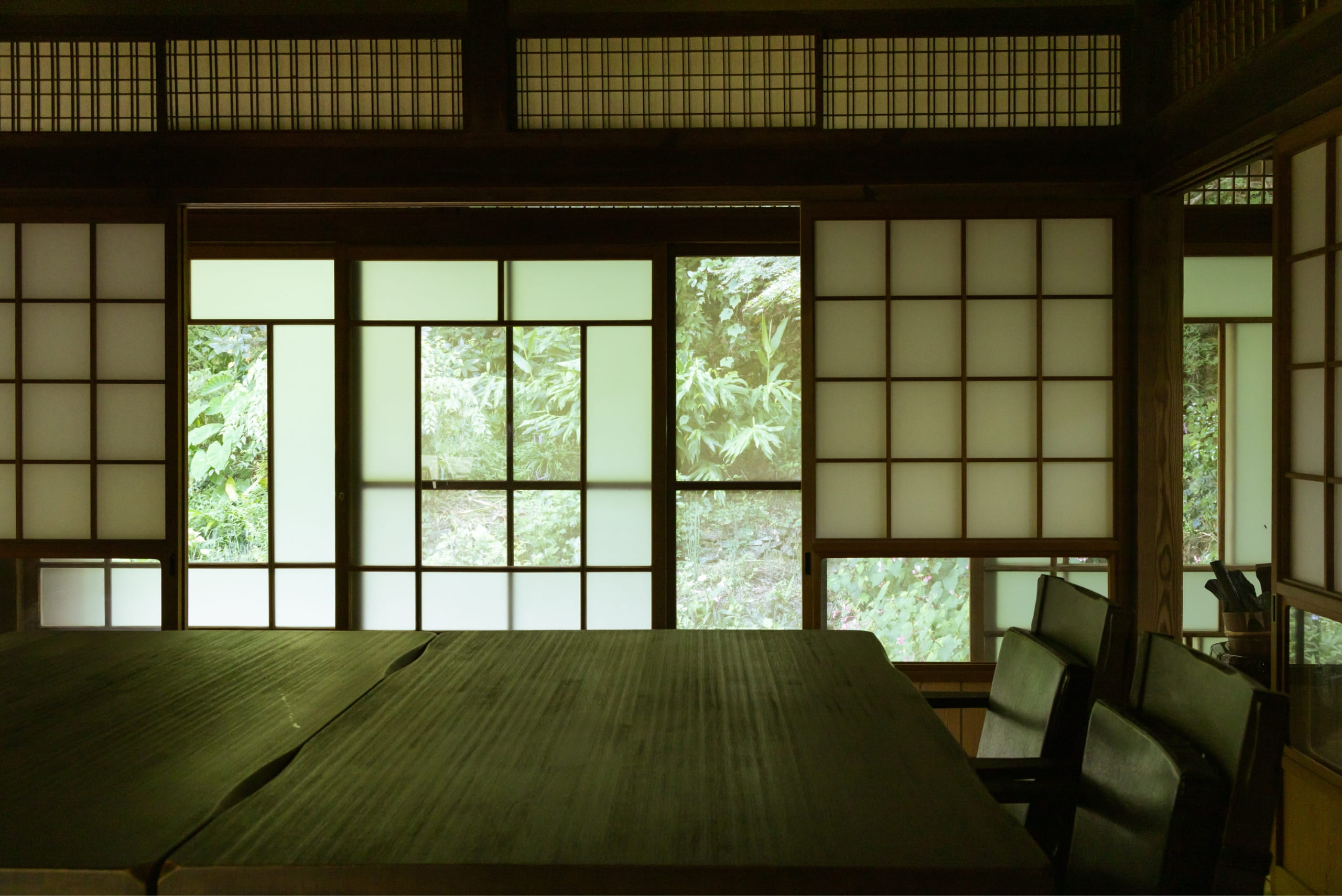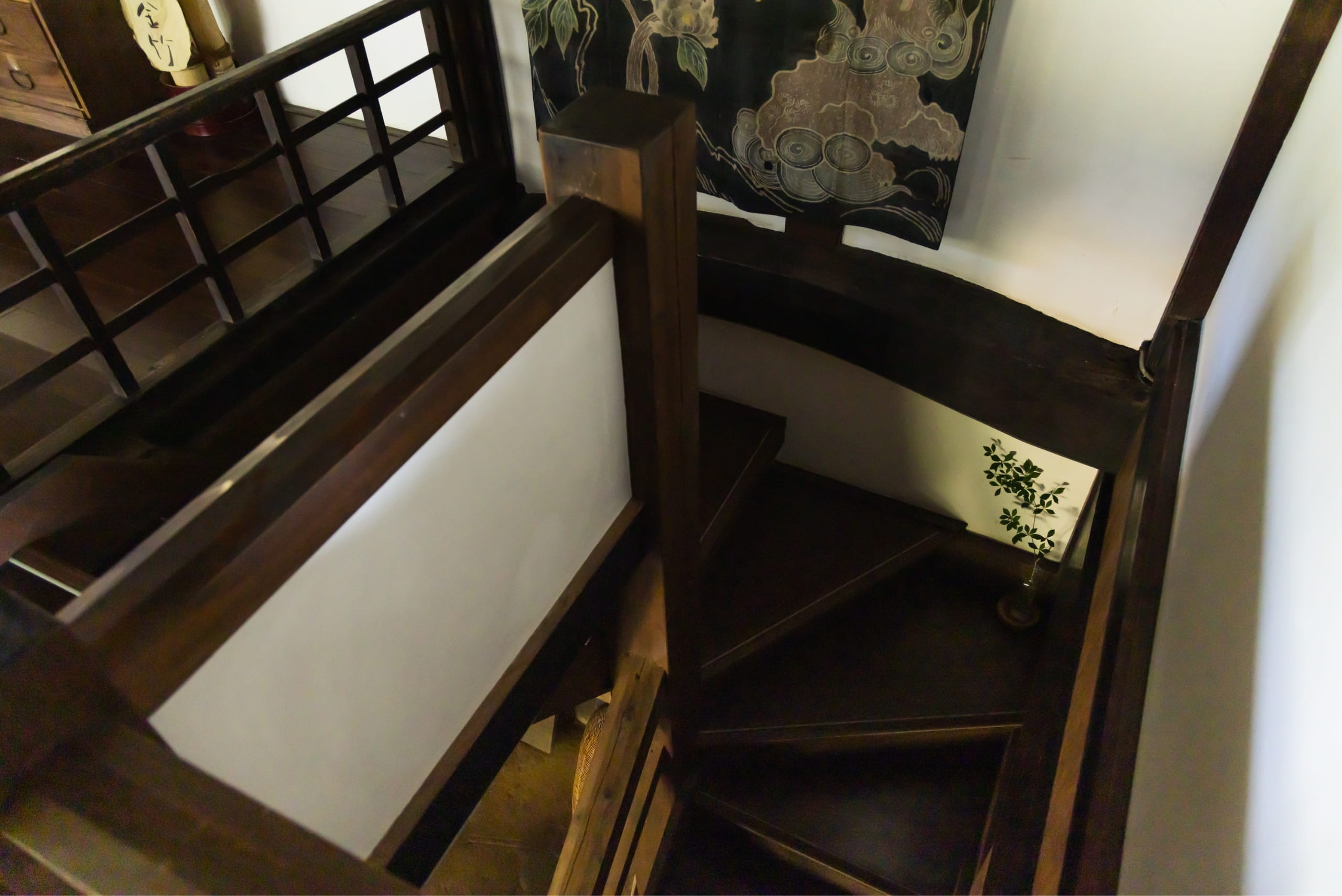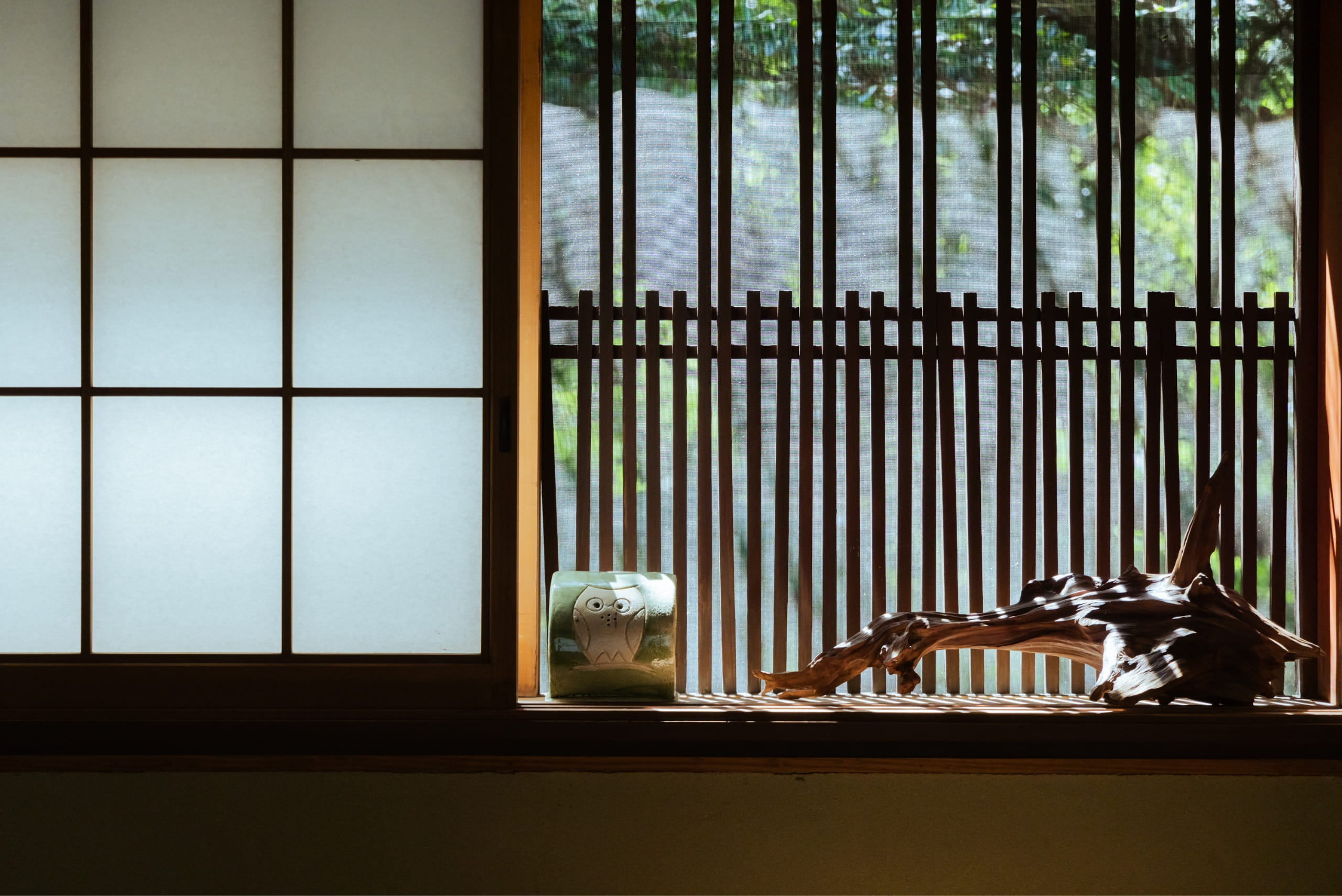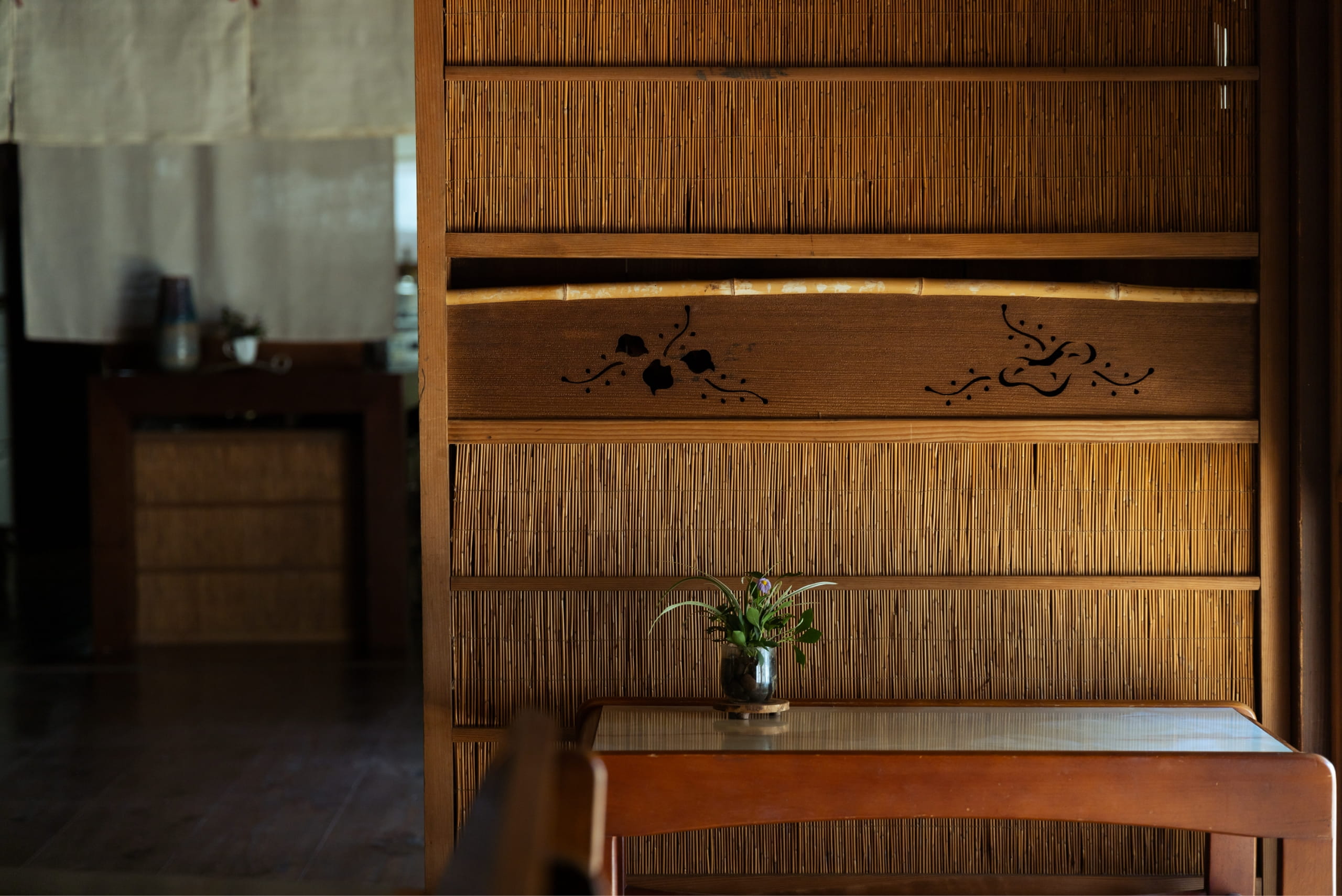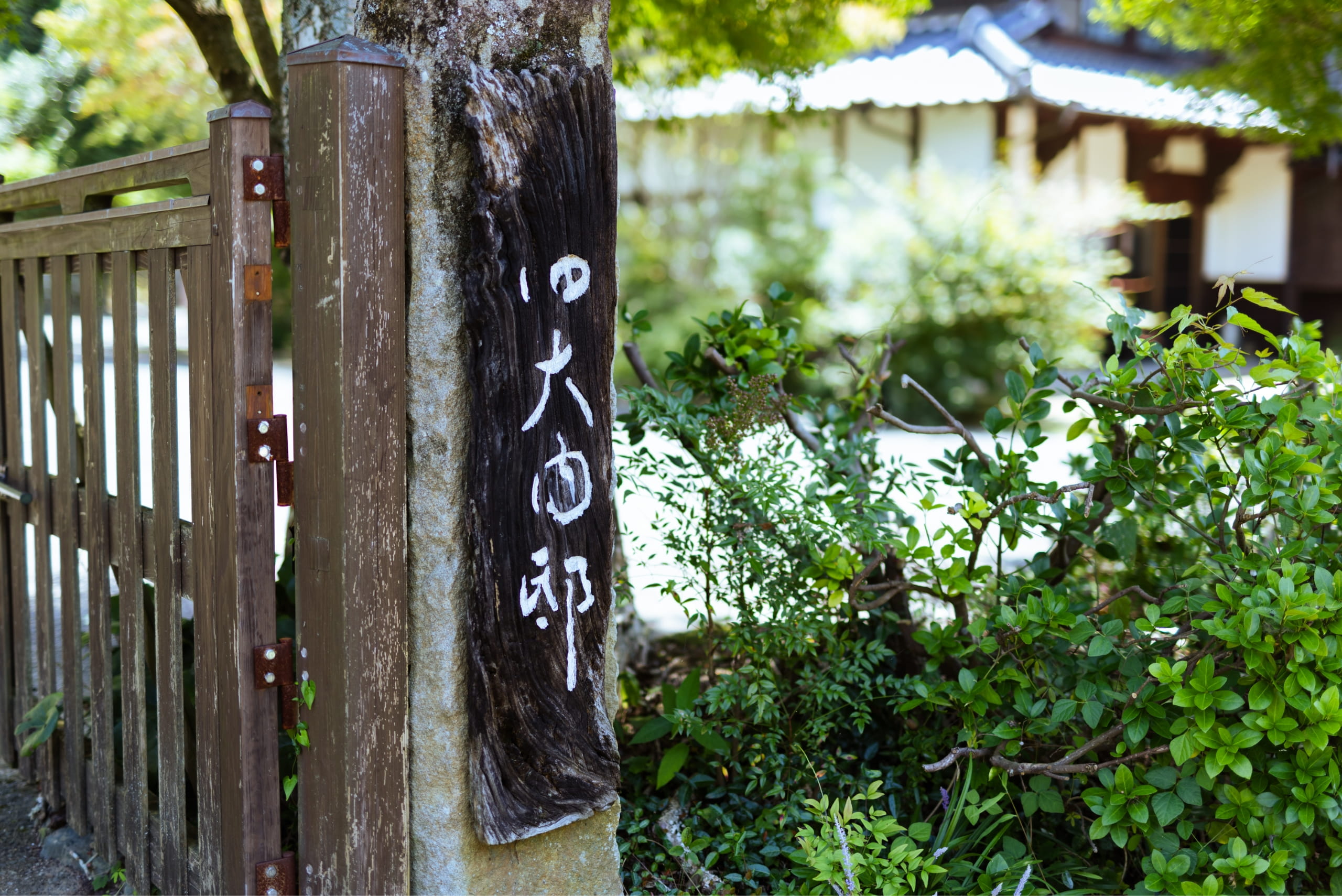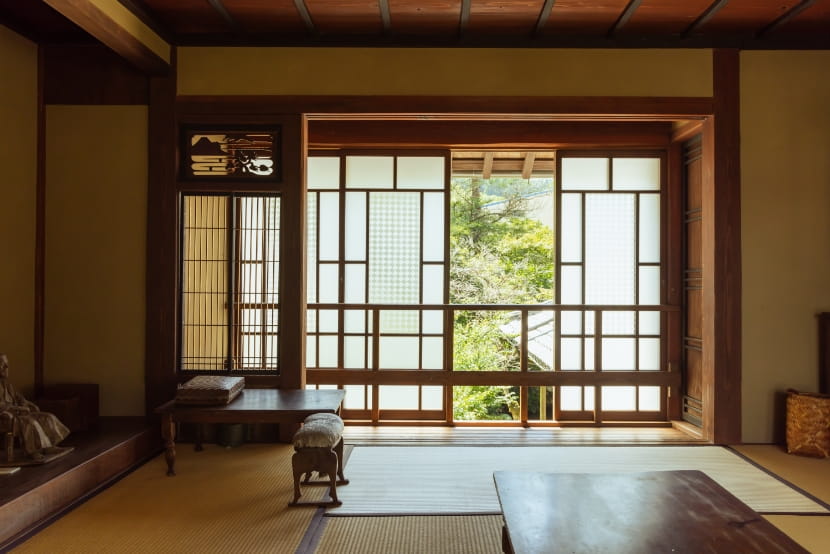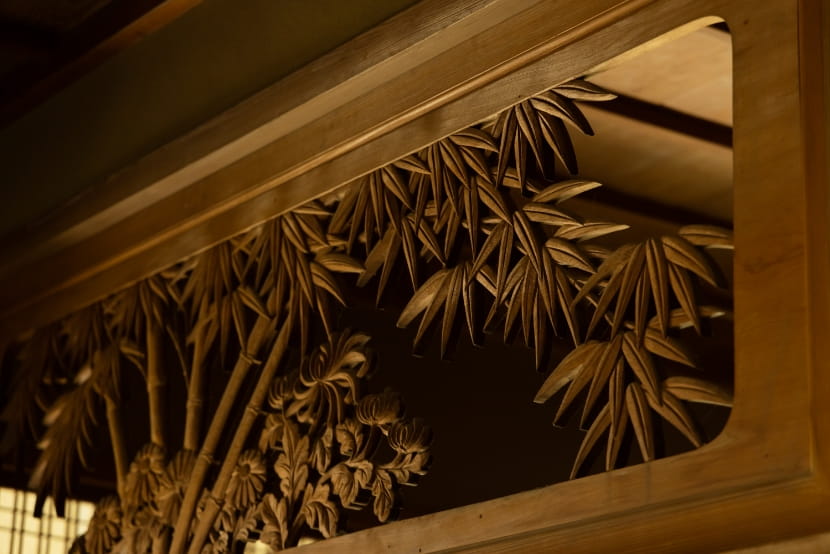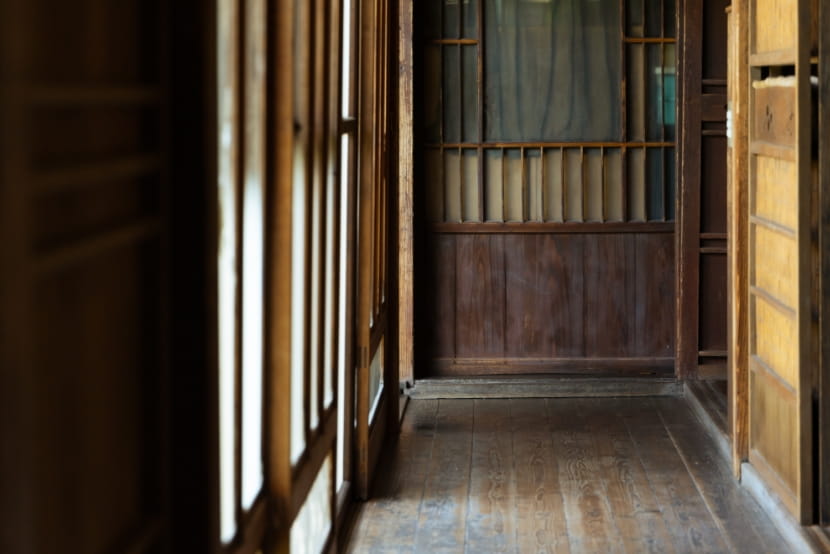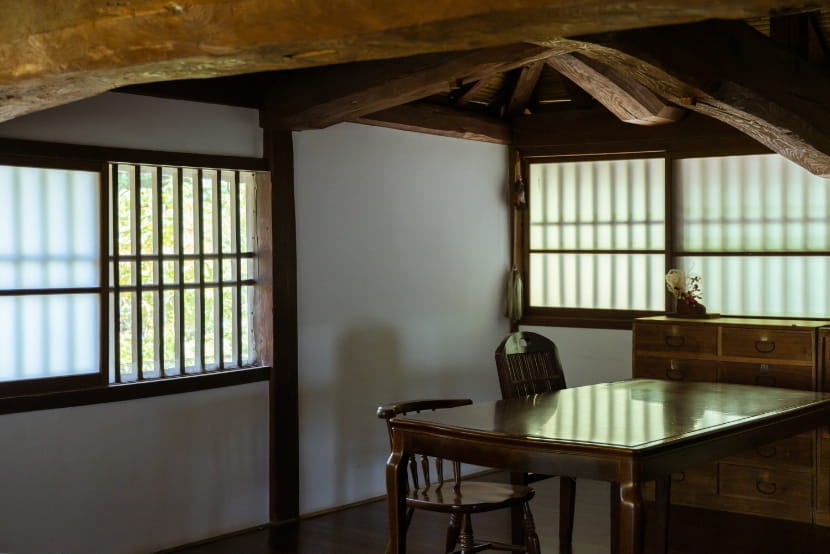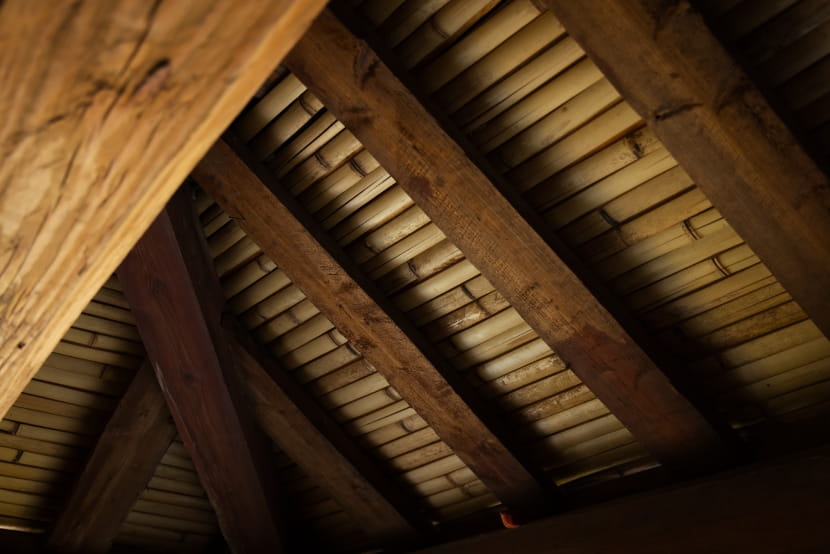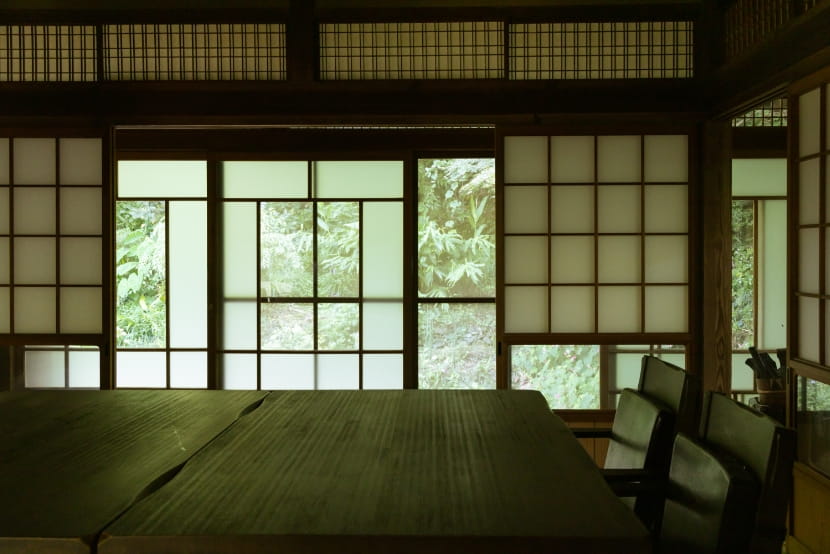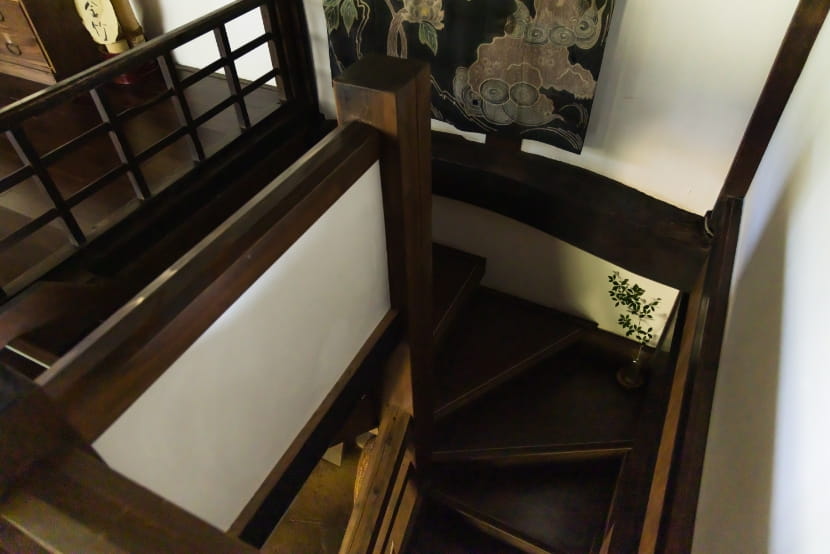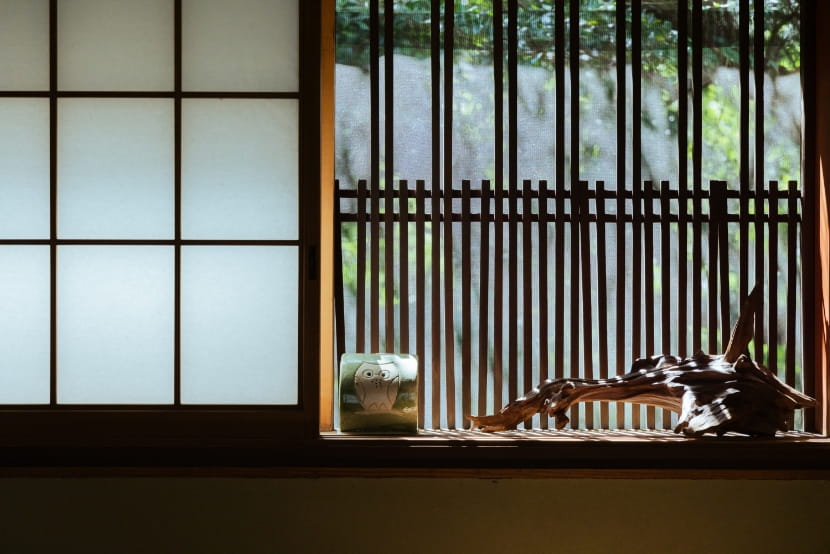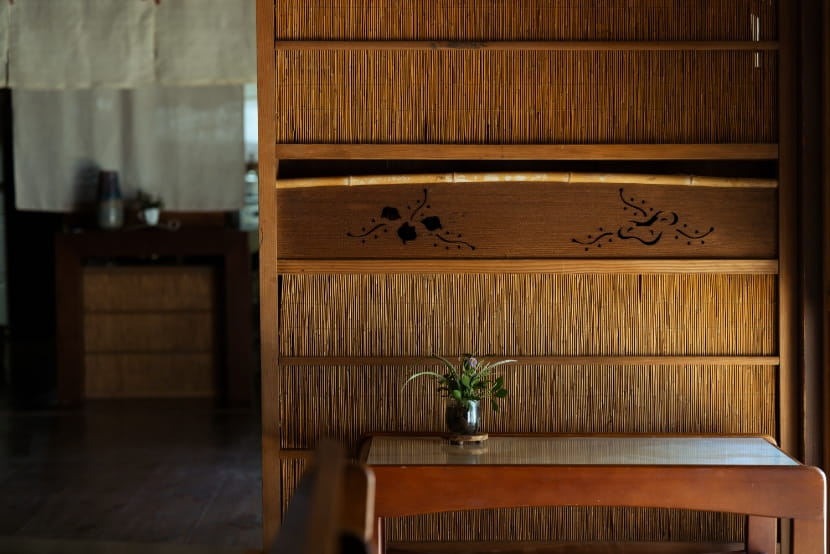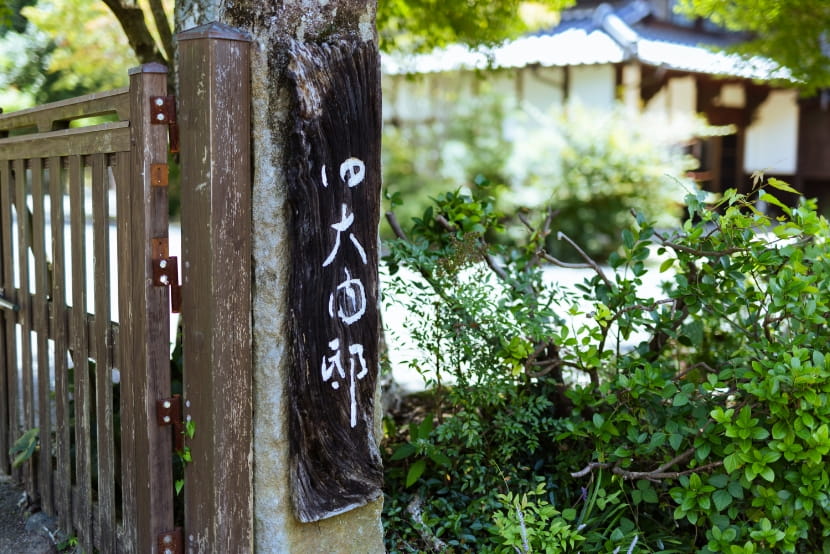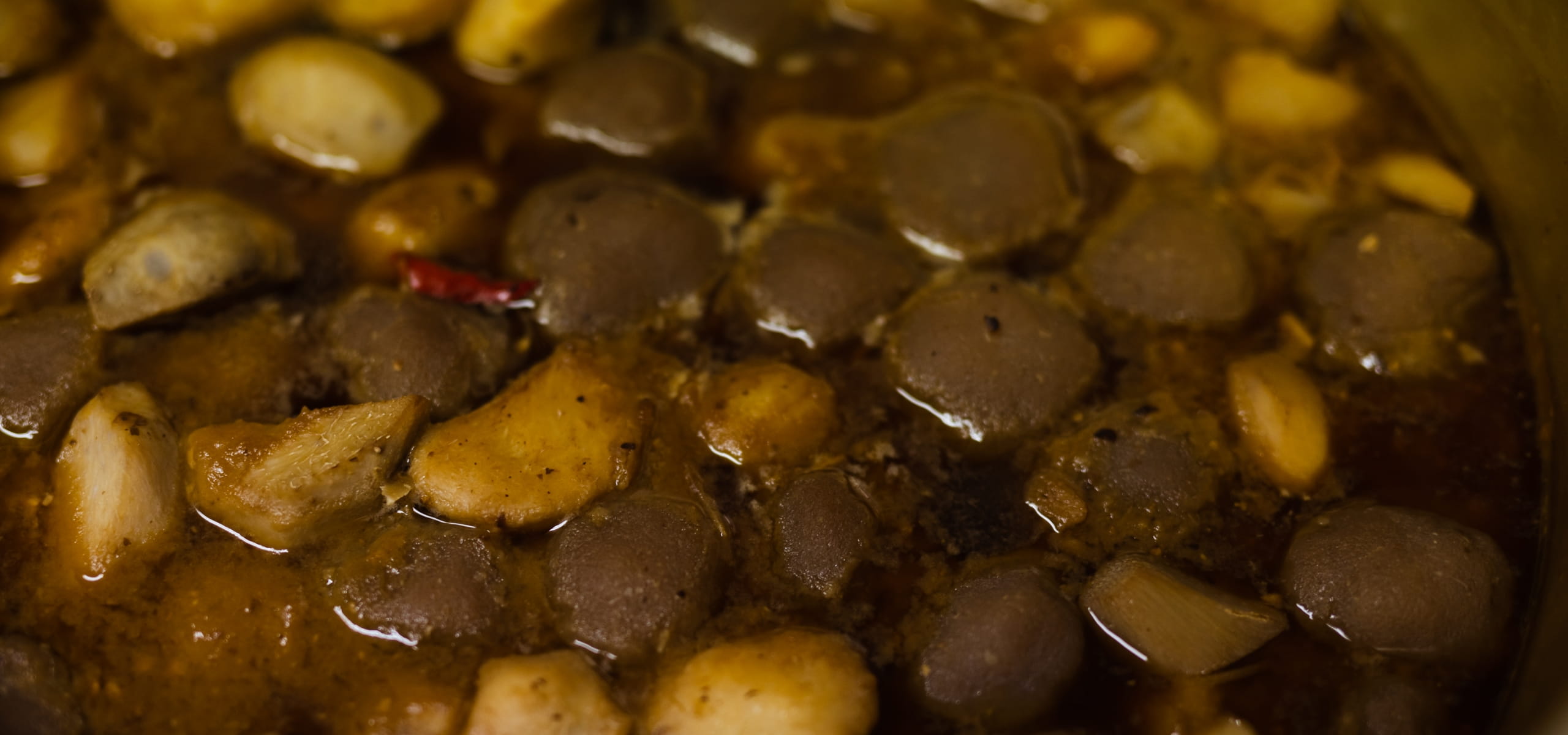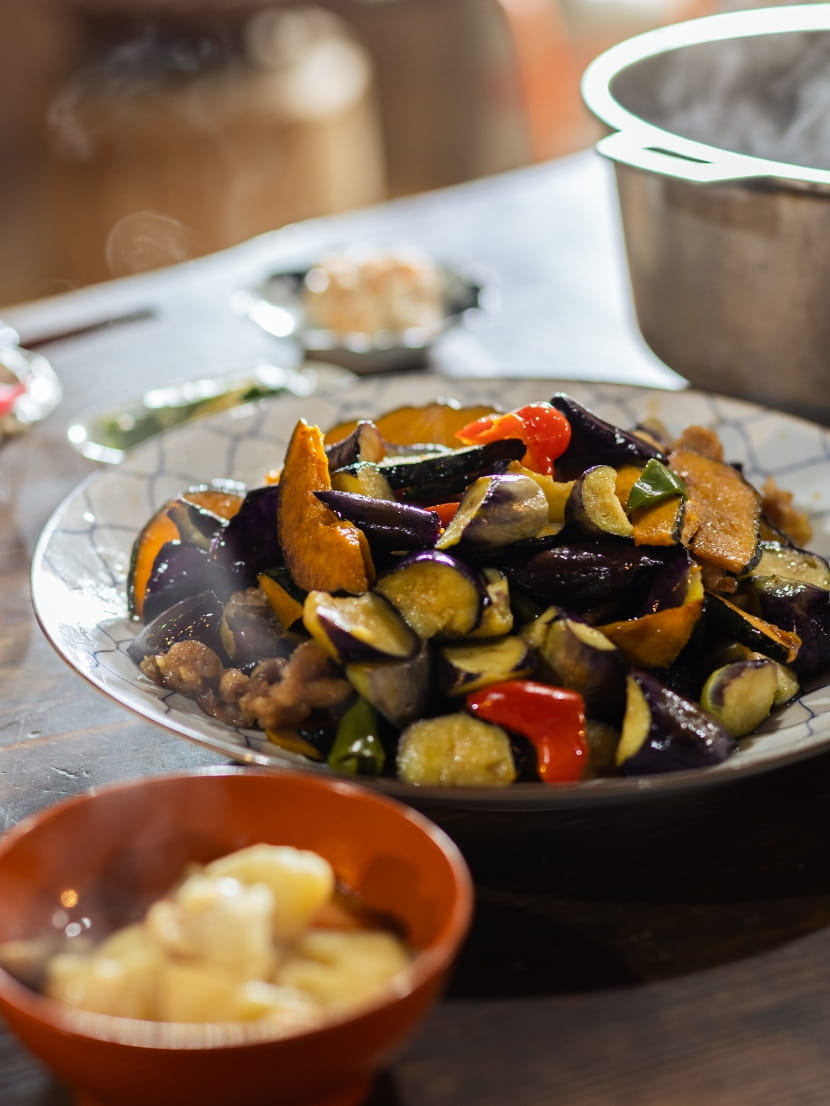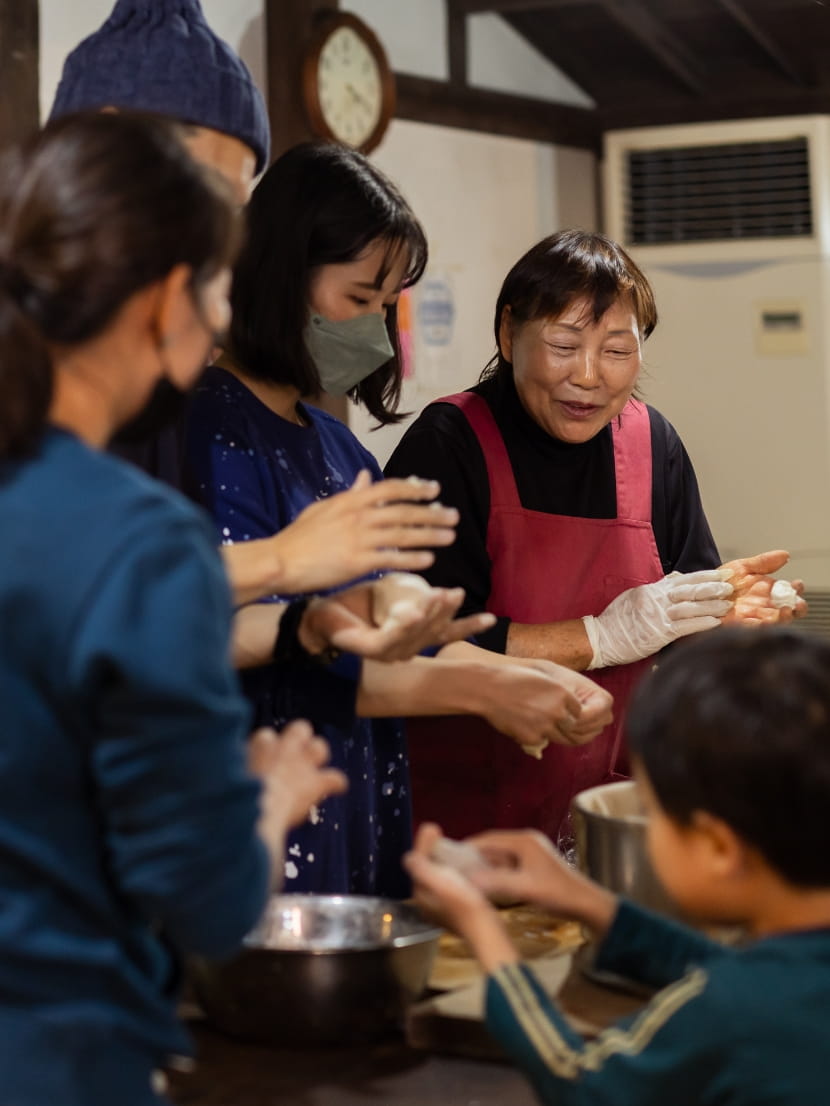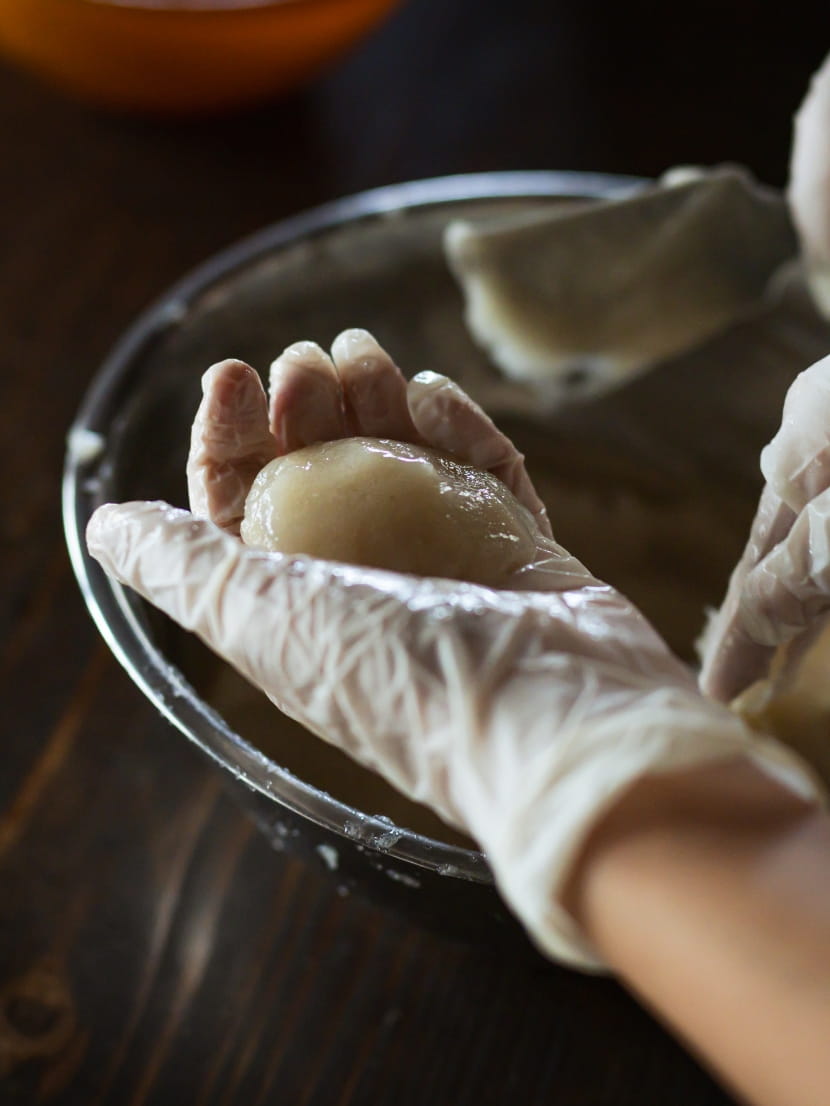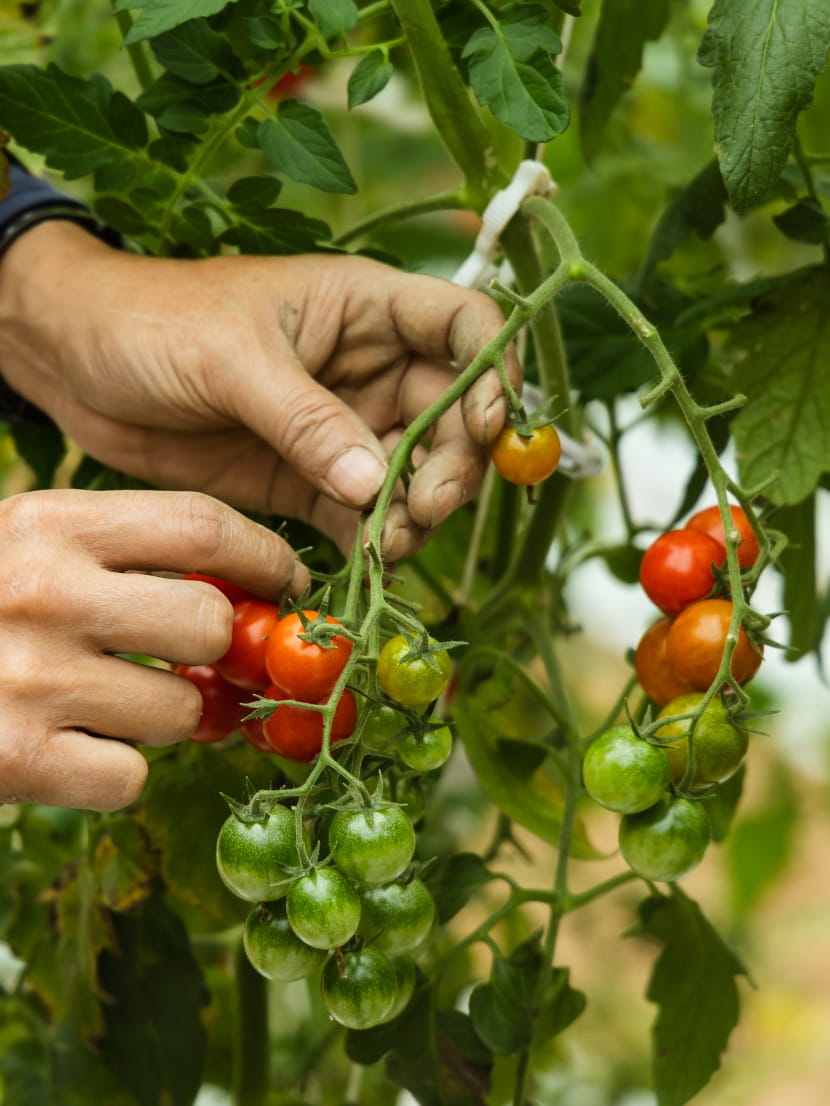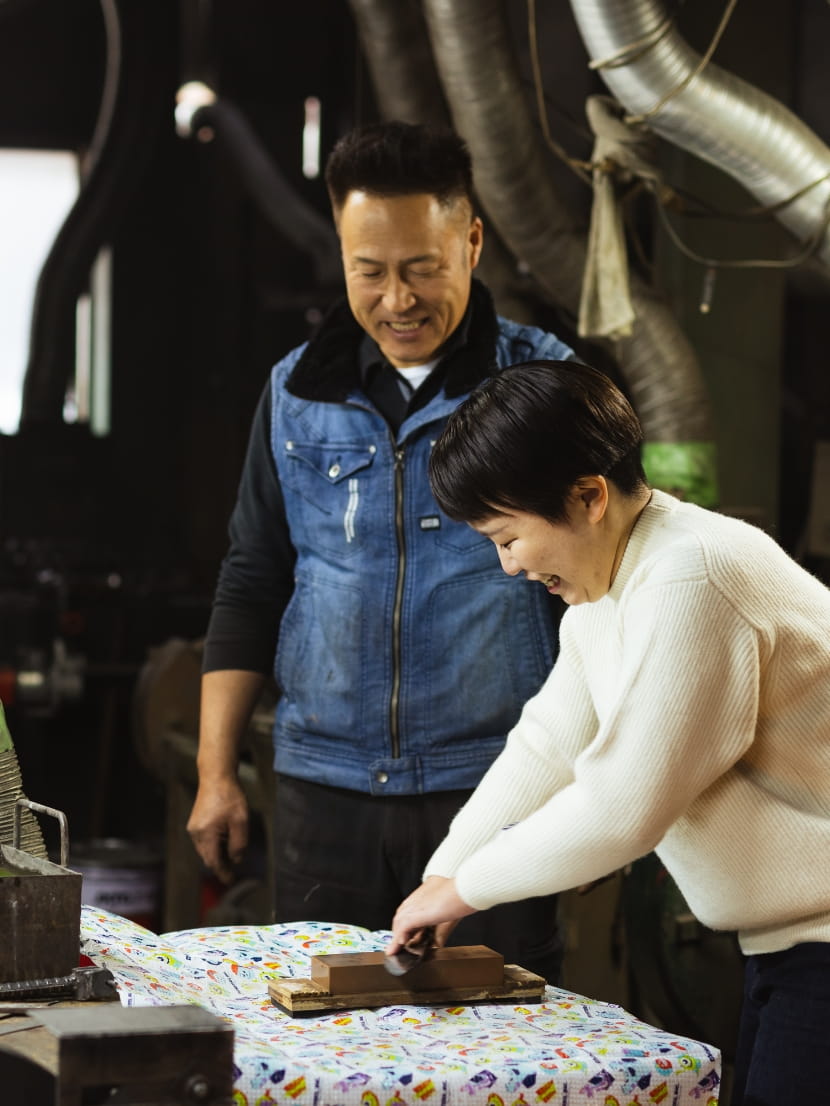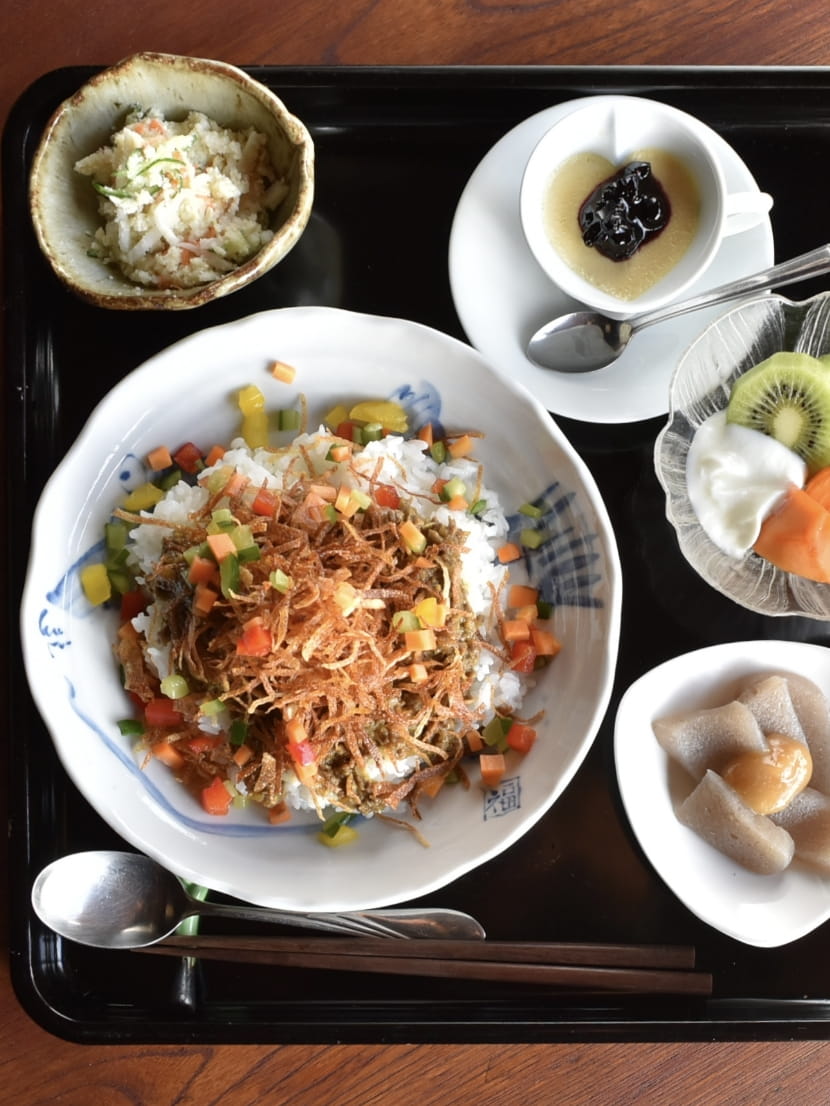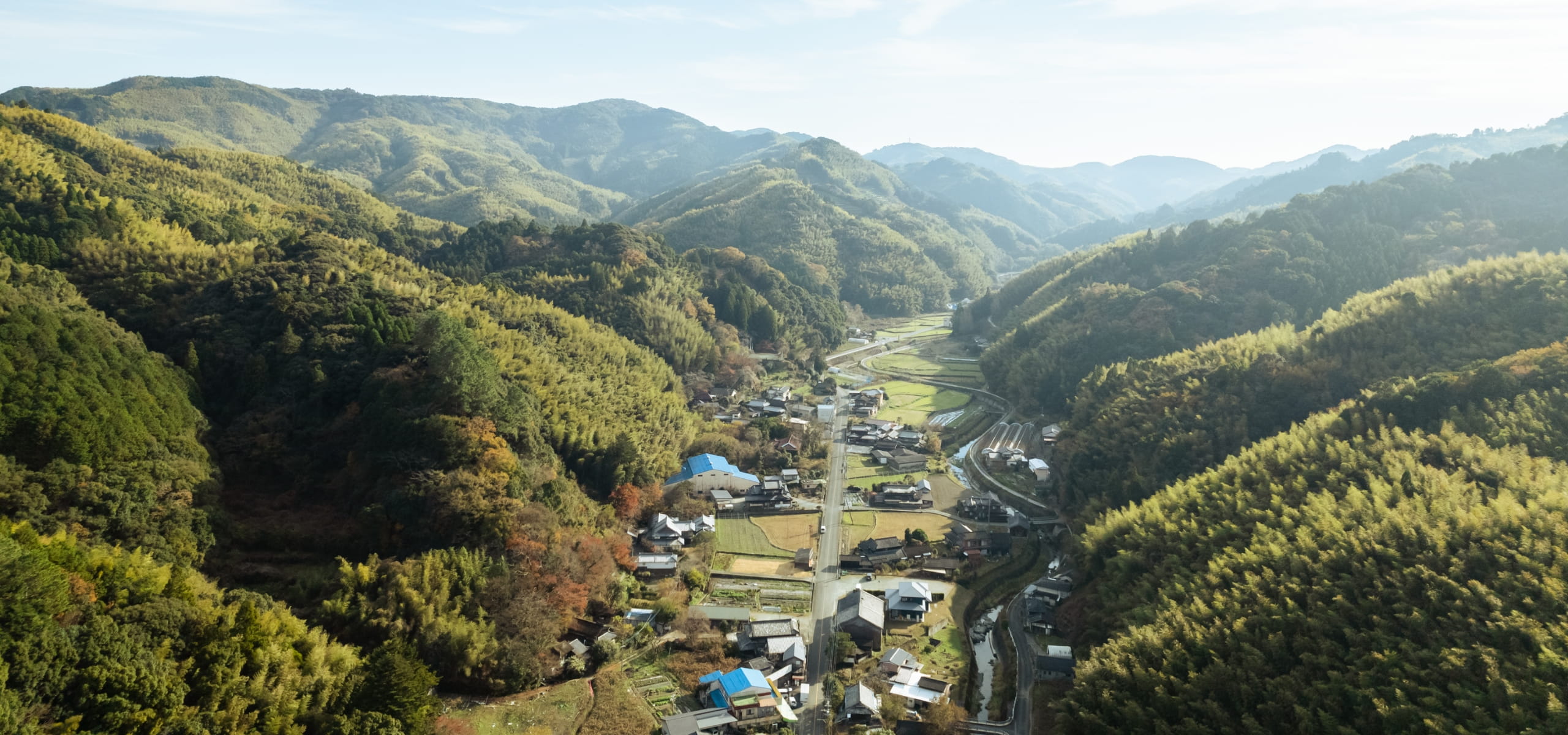Rare in the mountain villages of Tachibana-machi Shiraki, the former Ouchi Residence retains machiya townhouse architectural characteristics, while its stout framework and large beams give the structure a rich farmhouse air.
The main structure was built around 1884 in the Meiji Era, and extensions were added in the early Taisho and Showa eras (early 20th century). Due to this style of construction, visitors can see the architectural styles of the Meiji, Taisho, and Showa eras all blended together at the former Ouchi Residence. Among the highlights are delicately crafted ranma (Japanese transom panels), long, seamless wood hallways, intricately constructed thick pine beams, and bamboo that covers the second-story ceilings. The second floor study room is surrounded by glass on three sides, creating a comfortable space that lets in plenty of natural light and breeze.
However, the former Ouchi Residence has not always been preserved in its current state. About 30 years ago, when the house was on the verge of going to ruins, Ms. Maki Tanaka and other local residents formed the Former Ouchi Residence Preservation Society and restored it to its current state through signature drives, the “One Roof Tile Campaign” fundraising effort, and petitions to the town leadership. Thanks to their efforts, the former Ouchi Residence was donated to the town and designated as a Tangible Cultural Property in 2000.

